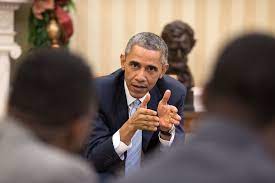What is empathetic leadership?

The heyday of the stern, distant boss, focused solely on counting pennies, is long gone. With employee attrition high as ever, organisations have started to recognise the impact of empathetic leadership on cultivating a positive work culture, and thus employee retention.
When over 2000 people were asked why they had left their job, in a survey conducted last year, a whopping 62% cited toxic company culture, with 56% claiming poor management as a driver for departure. Today’s employees are looking for something different, something softer, and more palatable than their parents’ bosses.
56% of employees listed poor management as a driver
for quitting their last job, in a 2022 study.
This blog post delves into the concept of empathetic leadership, and how it can be harnessed for actionable results in the workplace.
What exactly is empathetic leadership?
Empathetic leadership is a management style that emphasises understanding, compassion, and consideration for employees’ emotions, perspectives, and needs.
An empathetic leader has the ability to step into the shoes of their employees, recognising their struggles, and actively seeking ways to support them both personally and professionally. Open communication is the greatest tool of the empathetic leader, who does this by prioritising active listening and fostering a culture of acceptance, where employees feel valued and heard.
Authenticity is a crucial element for this. Leaders cannot become empathetic leaders just by talking the talk, employees are conscious of inauthentic attempts to preach empathy in the workplace. That is why, to master empathetic leadership and keep your employees engaged you must make it actionable, even if you are just planning to launch a business.
Why does empathetic leadership matter for employee retention?
Empathetic leadership is a powerful and often overlooked approach to enhance employee retention.
A 2023 EY study found that 87% of US workers think that demonstrated empathy leads to better leadership AND job satisfaction. After recent shared global upheaval, especially as Gen Z enter the workforce, an empathetic boss is no longer a luxury, but a necessity.
In order to feel productive (and protected) at work, employees must be able to trust their employer.
Empathetic leaders make an effort to understand their employees, and demonstrate their understanding through communication. They will prove their empathy in action by offering their employees consistent positive interaction and constructive feedback. Companies with a high level of trust in leadership show meaningfully higher employee retention rates. This also heightens the chance of having former employees return to the organisation later in their careers.
How can you put empathetic leadership into action?
Active Listening
Practise active listening during one-on-one meetings with employees. Create a safe space for them to share their concerns, ideas, and aspirations without fear of judgement or reprisal.
Recognition and Appreciation
Consistently recognise and appreciate employees’ efforts and accomplishments. By acknowledging the contributions of your employees to your organisation, you allow them to feel integrated in its success.
Flexible Work Arrangements
Offer flexible work arrangements that accommodate employees’ personal responsibilities and preferences. Allowing employees to work in a hybrid manner demonstrates understanding and support for their work-life balance.
Mentorship and Career Growth
Provide mentorship and opportunities for career development. Be interested and involved in the professional growth of your employees, and help them achieve their goals within the organisation.
Wellness
Acknowledge mental and physical health within the office. You can do this by implementing wellness programs that prioritise employees’ physical and mental well-being. Offer resources and support to help them cope with burnout or stress, and maintain a healthy lifestyle.
Examples of empathetic leaders to look to for inspiration
Satya Nadella
CEO of Microsoft

Nadella is renowned for his empathetic approach to leadership in tech. Having become CEO of Microsoft in 2014, Nadella was faced with a stagnant company culture and significant infighting, and managed to turn the tide for the better. In his book, ‘Hit Refresh’ Nadella explains that his chosen tool for success was empathetic leadership.
Nadella reinvigorated Microsoft’s company culture by focusing on his employees’ well-being – he introduced hybrid working, and began an active policy encouraging employees not to check their inbox on weekends. Accordingly, he was able to extend Microsoft’s success significantly.
Barack Obama
Former US president

Obama is the first African-American president of the US, and has long been cited internationally for his leadership skills. A remarkable ability to harness empathy has always been the driving factor behind Obama’s appeal.
He landed his career making start in a 2004 DNC speech, during which he powerfully evoked the diversity of US citizens as a matter of fact, and of celebration. In conversation with Oprah, Obama stated his biggest worry ‘is our empathy deficit. When I speak to students, I tell them that one of the most important things we can do is to look through somebody else’s eyes.’
The crux of Obama’s demonstration of empathetic leadership lies in his ability to put himself in the shoes of others, and look at things from their perspective as well as his own.
Malala Yousafzai
Youngest recipient of the Nobel Peace Prize

Yousafzai is a prominent activist for girls’ education, and balances several writing projects with her role in the Malala fund. Famously shot and wounded by the Taliban as a teenager in Pakistan, she advocates for a peaceful, empathetic approach to activism. Yousafzai has even expressed forgiveness for the gunman who almost took her life.
This approach clearly manifests in her leadership of her charity, where she has professed her belief in the importance of dialogue and communication even during conflict: ‘you must not treat others with cruelty and that much harshly, you must fight others but through peace and through dialogue and through education.’



